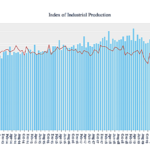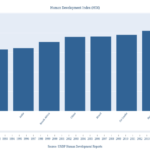Picture This: How bad is India’s digital divide?
India’s Covid vaccination program requires citizens to register on the CoWin portal to get vaccinated. This condition has been criticized for ignoring India’s digital divide. This ‘digital divide’ also came in for criticism from the Supreme Court. Digital divide refers to the division of people based on their ability to use or access to internet or devices connected to the internet.
This chart tries to understand this digital divide better by looking at the percentage of men and women across 22 Indian states and Union Territories, who have ever used the internet. This is based on findings of National Family Health Survey 20190-20 (NFHS 5).
We find wide variation between percentage of men and women who have ever used the internet within and across states. While Goa has the highest percentage of men who have ever used the internet in India at 82.9 percent, the percentage of women who have used internet in the state is at 73.7 percent, a difference of 9.2 percentage points. Sikkim has the highest percentage of women in India who have ever used the internet at 76.7 percent. The same number for men in Sikkim is 78.2 percent.
The lowest percentage of men who have used internet is seen in Meghalaya with just 42.1 percent. Assam has a similar percentage of men who have accessed the internet at 42.3 percent. The lowest percentage of women who have used the internet is seen in Bihar at just 20.6 percent.
For these 22 states and UTs, according to the NFHS 5 data, the average percentage of men who have ever used internet is 62.1 percent, while the average for women is 42.4 percent. This means that 37.9 percent of men, and 67.6 percent of women in these 22 states or UTs have never accessed the internet. This numbers underline the sharp digital divide that we see in India, and which has come in for criticism as a barrier to vaccination against Covid.
The digital divide manifests itself across several dimensions: rural or urban, class, social identity, and as we can see in the picture above, across genders. We can see that the lowest male percentage for a state is equal to the average for women. This tells us how bad the gender divide within the digital divide is.
If you wish to republish this article or use an extract or chart, please read CEDA’s republishing guidelines.







